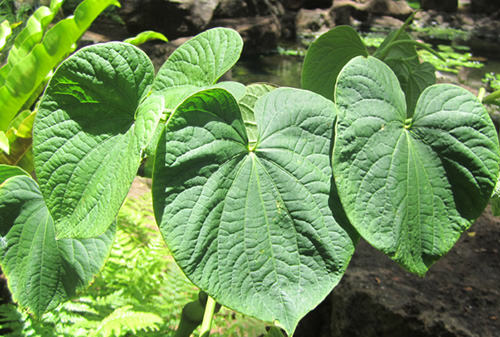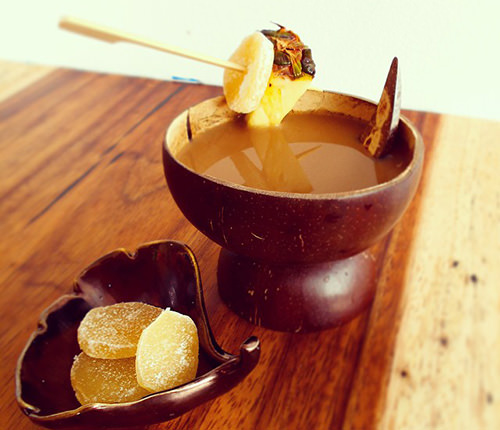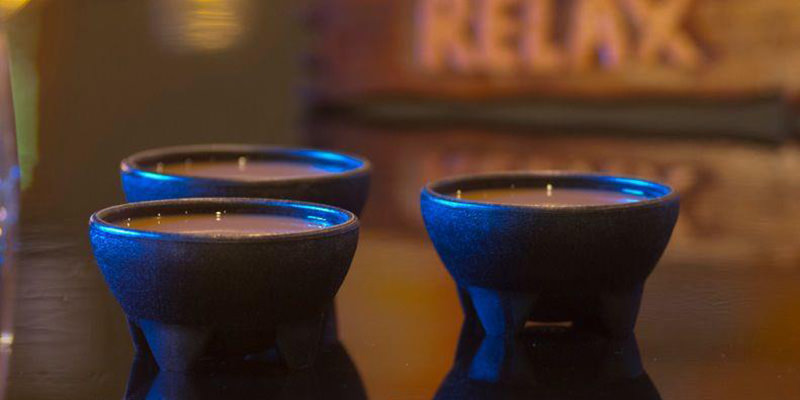Dive bar. Classy Bar. Oxygen bar. Bar with beds in it. Bar with washing machines in it. Bar with cats in it.
Bar variations kind of cease to surprise. The only bar variation we didn’t expect to see, or see succeed, is the bar entirely without alcohol that still claims to intoxicate. The bar with a drink that looks and tastes a bit like pond sludge, served out of a coconut shell. The bar with weird projections of cartoons and nature movies on the wall, for no apparent reason. And yet, here it is, and here we are, wondering when the sh*t’s gonna kick in.
We’re talking about the kava bar, a “new,” but ancient, “safe,” but possibly toxic, alternative to a beer and a shot to start your weekend. But before you strut your way down the boulevard and through the doors of the next trend in intoxication, a little background.
Kava, aka “kava kava,” is the root of a species of pepper tree (Piper methysticum for all you hardcore horticulturists out there). You haven’t heard of it yet because it’s most commonly found in the South Pacific islands, where it’s been used for centuries for ceremonial and recreational purposes. Why recreational? Because kava—or rather the “kavalactones” compunds found in kava—is supposed to have relaxing properties, “producing brain wave changes similar to changes that occur with calming medicines such as diazepam,” aka Valium.

And these aren’t just the specious claims of some hippies looking to corner the root extract market. According to the comprehensive Alternative Medicine, “more than a dozen compounds isolated from the plant have been shown to cause muscle relaxation and pain relief in animal and laboratory studies.” If you’re still doubtful, you can literally taste the impact of kava. Chewing the bark—or, more likely, eating kava candies—“tends to cause a temporary numbness and tingling sensation on the tongue.” It’s groovy science, but it’s still science.
Not that a doctor will be writing you a prescription for kava anytime soon; use of kava, recreational or otherwise, is still very much in the realm of alternative medicine. Though now, yes, it seems to have found its way into the nightlife scene in the form of the kava bar, where apostles of the kava creed are now dispensing “kava juice” and “kava tea” to any and all takers.
The basic procedure for making kava juice or tea is steeping ground up kava in water, and then squeezing and filtering out the solids. There are various cultivars, though Hawaiian and Vanuatu are said to be the most rich in the freaky stuff. Or the stuff that makes you freaky. Left alone, the drink looks a bit like muddy gray water, the kind of puddle you’d be left with after finishing that clay sculpture of a turtle in seventh grade. (Your teacher says it looks like a rock? Whatever. It’s art.)
No surprise, you’re supposed to knock this stuff back in one go—which is actually kind of hard since it’s generally served in fairly large portions in “kava bowls” (typically coconut shells). But if you are drinking kava plain (most bars have a sweeter, gussied-up version), you probably won’t want to treat it like a Scotch neat. Cheers with the traditional “Bula!”—which means anything from “hello, goodbye, welcome, love, and more”—knock your kava back, and wait for the chillness to set in.

Given our newly invigorated national love affair with all things (or at least one thing) herbal, maybe it’s no surprise kava’s growing in popularity. But that doesn’t mean it’s for everyone. In fact, there’s some serious controversy as to whether kava can inflict major liver damage. Yes, it seems grandly hypocritical for a booze publication to call out any dangers of liver damage. But the kava issue is a bit more confusing, and as yet undetermined (we all know what we’re getting into with alcohol).
Way back in 2001, The New York Times reported the findings of German scientists, who claimed kava, “an herbal supplement promoted for stress reduction, may be responsible for 30 cases of liver toxicity in Germany and Switzerland.” Bans in Germany and Switzerland, and elsewhere in the EU, quickly followed. We should note, those bans are basically lifted by now, though personal sale is still prohibited in Germany. And, according to the University of Maryland Medical Center, it’s still “not clear whether kava itself causes liver damage, or whether taking kava in combination with other drugs or herbs is responsible.” Mildly reassuring?
Speaking of “combination with other drugs,” most kava resources recommend not using kava in combination with certain medications. “Because kava lactones affect neural pathways in the brain to generate relaxing and anxiolytic effects, kava can interact in harmful ways with prescription medications that also work on these neural pathways,” says Kava.com. “These include sleep medications like diazepine, anti-convulsants, anti-anxiety drugs, anti-psychotics, and levodopa to treat Parkinson’s disease.” (They also immediately note that list isn’t exhaustive.)
All of which to say, before you dive into the nearest kava bowl at the nearest kava bar (there aren’t a ton, though a bunch in South Florida, for some reason), check out your medication list first. And if you do go to a kava bar, ask the bartender. Chances are that not only will anyone who works at a kava bar be thoroughly schooled in the ways of kava, but, given the kava, they’ll probably be pretty chill about helping you.
Bula, bula!

